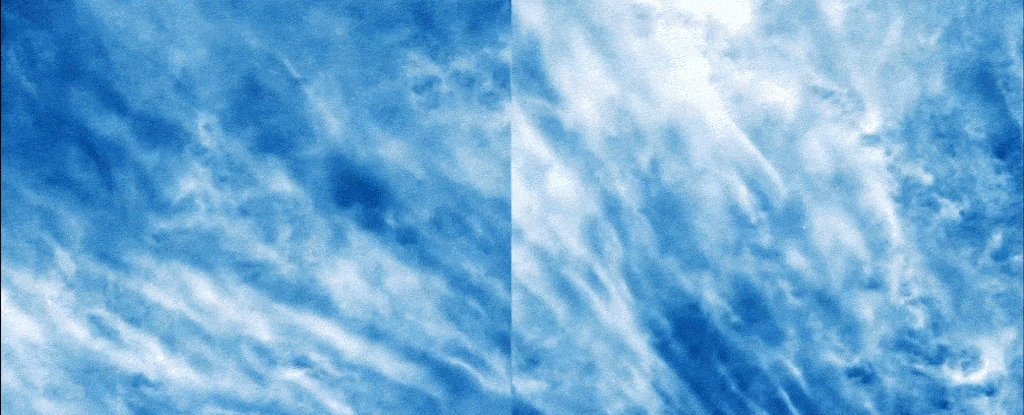In certain times of the year, at the polar regions of Earth, just after the Sun has set, sometimes you can see electric-blue clouds high up in the sky.
These clouds are called noctilucent or polar mesospheric clouds (PMC) and apart from being exceptionally pretty, they can also help scientists understand turbulence in the atmosphere.
On 8 July 2018, a giant balloon was launched in Estrange, Sweden to study these fantastic clouds. For five days, the balloon floated over 50 miles (80 kilometres) above the Earth across the arctic to Western Nunavut, Canada.
The mission, called the PMC Turbo mission, had seven imaging systems on board, as well as a LIDAR (light detection and ranging) tool. It captured a staggering 6 million images - filling up 120 terabytes of storage.
"From what we've seen so far, we expect to have a really spectacular dataset from this mission," said Dave Fritts, principal investigator of the mission at Global Atmospheric Technologies and Sciences.
"Our cameras were likely able to capture some really interesting events and we hope will provide new insights into these complex dynamics."
The clouds themselves come to be when ice crystals form on tiny meteor remnants in the upper atmosphere.
But apart from their stellar origins and beauty, what makes these clouds even more interesting is the fact they're affected by atmospheric gravity waves.
Although that might not sound like much, these waves actually play a huge role in transferring energy from the lower troposphere to the higher mesosphere.
Gravity waves are generated in the troposphere by particular weather, or by airflow over mountains, and although we know how they form and change, we haven't been able to visualise this in detail.
"This is the first time we've been able to visualise the flow of energy from larger gravity waves to smaller flow instabilities and turbulence in the upper atmosphere," Fritts said.
"At these altitudes you can literally see the gravity waves breaking - like ocean waves on the beach - and cascading to turbulence."
The researchers are hoping that this vast array of information will help them understand the structure and variability of the upper atmosphere, and may even improve weather forecasting down the track.
The researchers are just starting to look into the data now, and no results have been published, but we're sure there is lots to come.
And while we wait on the exciting results that were gathered with this amazing technology, we can marvel at how beautiful the phenomenon is. Sometimes, that's just what we need.
